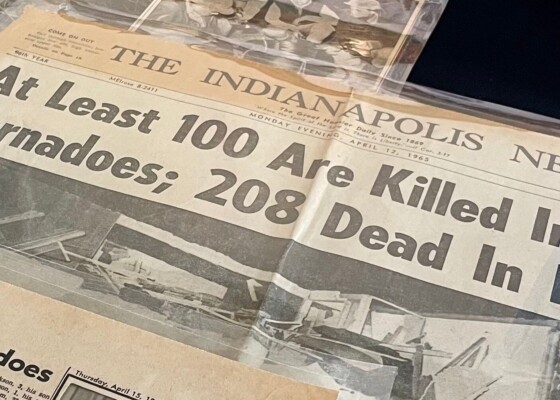Making Monsters: Learning Game Design with Frankenstein Workshop Recap
March 12, 2018On Friday, Feb. 9, Indiana Humanities held Making (and Playing) Monsters: Learning Game Design with Frankenstein at the IUPUI University Library. We invited Dr. Anastasia Salter, assistant professor of digital…
On Friday, Feb. 9, Indiana Humanities held Making (and Playing) Monsters: Learning Game Design with Frankenstein at the IUPUI University Library. We invited Dr. Anastasia Salter, assistant professor of digital media at the University of Central Florida, to teach participants the fundamentals of digital textual gaming using Twine 2.2.1. Twine is an open source platform popular with makers of games, hypertext novels, and other forms of interactive narratives. Using a graphical interface and a straightforward syntax, Twine is ideal for rapid prototyping and development of interactive experiences for the web.
If you’re new to the platform try playing through a few of my favorites from among Dr. Salter’s recommendations:
- Isis: explore obedience and rebellion on a spaceship with a crew of one
- And the Robot Horse You Rode In On: enjoy a unique mix of sci-fi and western storytelling
- Invasion: delve into precious memories in an apocalyptic adrenaline rush
After becoming more familiar with the nature of Twine and interactive narratives, Dr. Salter walked participants through the basics of the platform’s game development structure. Working through the process of game design, we moved into paper prototyping to start planning out our own narrative games.
With a wide range of skill levels present, Dr. Salter thoughtfully provided walkthroughs and manuals online, so each could proceed at their own pace as we went along. If you’re interested in trying your hand at making your own game, workshop participants found Dr. Salter’s walkthrough and the Harlowe 2.1.0 manual particularly helpful. The walkthrough can show you how to link content passages, add images, and script variables as well as make your game visually engaging by formatting colors, text and backgrounds. The Harlowe manual is a guide to all sorts of macros you can add to your game. My favorite to play with are the text style macros, which can change the appearance of text so it blinks in and out, blurs, or even shudders to convey fear!
The workshop was a perfect fit for the Quantum Leap initiative. With a crowd of teachers, librarians, students, and community members from all over the state there was a wealth of storytelling talent in the room. The skills Dr. Salter shared that day will be passed on to many others—some participants told us they plan to bring Twine to their classrooms and library patrons. Check out one of the games created at the event here; Lisa Hensell’s game Igor is just one example of the many creations brought to life at the workshop!
Explore #MakingMonstersWorkshop on Twitter for a closer look at the day’s activities including Dr. Salter’s presentation and the paper prototyping stage. You can also see Dr. Salter’s blog post on ProfHacker about the event, Making Games in the Classroom: Twine and Harlowe 2.
Special thanks to the IUPUI University Library and School of Liberal Arts for hosting the event!


